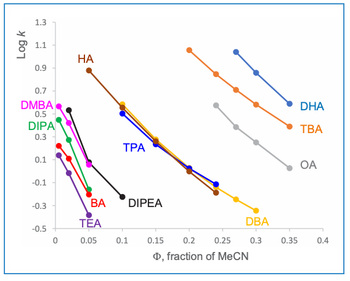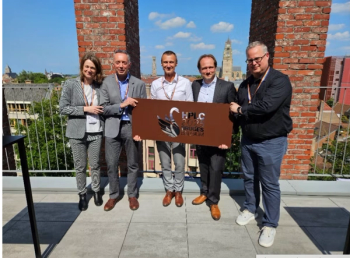Key Points:
- Recent innovations in HPLC, including improved column materials, high-resolution mass spectrometry coupling, and refined sample preparation techniques, have significantly increased the sensitivity, speed, and accuracy of PFAS detection in complex food matrices.
- PFAS contamination in food, stemming from environmental sources and food packaging, poses serious health risks.
- Regulatory agencies like the FDA, EPA, and ECHA are responding with stricter standards and bans, prompting industries to seek safer alternatives and improve monitoring
High performance liquid chromatography (HPLC) is a vital analytical technique in food analysis, particularly for detecting and quantifying per- and polyfluoroalkyl substances (PFAS). PFAS are persistent environmental contaminants with significant health risks. This article explores the technological advancements in HPLC that enhance its role in analyzing PFAS in food, including innovations in column technology, detection systems, and sample preparation techniques. It also discusses the impact of PFAS regulations on food safety protocols and industry practices, highlighting the need for ongoing research, innovation, and collaboration to ensure the safety and quality of the food supply.
High performance liquid chromatography (HPLC) is a cornerstone analytical technique in food analysis, renowned for its precision, sensitivity, and versatility. One of the critical applications of HPLC lies in the detection and quantification of per- and polyfluoroalkyl substances (PFAS), a group of persistent environmental contaminants with significant health risks. This article delves into the technological advancements in HPLC that enhance its role in analyzing PFAS in food and discusses the impact of PFAS regulations.
Technological Advancements in HPLC
Recent innovations in HPLC column technology have significantly improved separation efficiency, resolution, and speed. The use of smaller particle sizes in column packing materials increases the surface area for interactions, enhancing separation efficiency and resolution. Core–shell columns, which feature a solid core surrounded by a porous shell, offer high efficiency and faster analysis times compared to traditional fully porous particles. Monolithic columns, made from a single piece of porous material, provide high permeability and low back pressure, enabling faster flow rates and shorter analysis times. In addition, new stationary phase materials, such as hybrid and polymer-based phases, offer improved stability and selectivity for a wide range of analytes.
Advancements in detection systems have also enhanced the capabilities of HPLC. Coupling HPLC with high-resolution mass spectrometry (HRMS) provides high sensitivity and specificity, allowing for the detection of PFAS at very low concentrations. Tandem mass spectrometry (MS/MS) systems offer enhanced selectivity and sensitivity, making them ideal for complex food matrices. Improvements in fluorescence and UV detection systems have increased their sensitivity and dynamic range, enabling the detection of a broader range of compounds.
Effective sample preparation is crucial for accurate PFAS analysis. Recent advancements include refined solid‑phase extraction (SPE) techniques that provide better recovery rates and cleaner extracts, reducing matrix effects and improving detection limits. Automation of sample preparation processes has increased throughput and reproducibility, reducing the potential for human error. Microextraction techniques, such as solid-phase microextraction (SPME) and dispersive liquid–liquid microextraction (DLLME), offer efficient and rapid extraction of PFAS from complex food matrices.
Advancements in method development and validation have improved the reliability and robustness of HPLC analyses. The integration of chemometric tools in method development allows for the optimization of chromatographic conditions and the analysis of complex data sets. The use of environmentally friendly solvents and the development of sustainable methods have reduced the environmental impact of HPLC analyses. Improved gradient programming techniques have enhanced the separation of complex mixtures, reducing analysis times and improving resolution.
PFAS in Food
PFAS are a group of man-made chemicals used in various industrial and consumer products for their water- and grease‑resistant properties. They are often referred to as “forever chemicals” due to their persistence in the environment and resistance to degradation. PFAS can enter the food supply through contaminated soil and water, food packaging materials, and food processing equipment.
The presence of PFAS in food is a growing concern due to their potential health risks. Exposure to PFAS has been linked to various health issues, including cancer, liver damage, thyroid disease, and developmental effects in infants and children. As a result, there is increasing scrutiny and regulation of PFAS in food to protect public health.
The U.S. Food and Drug Administration (FDA) has been actively monitoring PFAS levels in the food supply chain. The FDA’s testing has shown that most foods not grown or produced in specific geographic areas with known PFAS contamination do not have detectable levels of PFAS. However, certain foods, particularly those grown or produced in contaminated areas, may contain higher levels of PFAS. The FDA continues to review available data and provide technical consultation to states to help determine if there is a potential health concern for foods contaminated with PFAS.
PFAS can also migrate into food from packaging materials. Many food packaging products, such as paper bags, wrappers, and molded fiber bowls, contain PFAS to provide grease resistance. Studies have shown that PFAS can migrate from packaging into food, especially when the food is fatty, salty, or acidic (1). This has led to increased efforts to phase out PFAS in food packaging and find safer alternatives.
Impact of PFAS Regulations
The regulation of PFAS has become a critical issue as a result of their persistence in the environment and potential health risks. Governments worldwide are implementing stricter regulations to limit PFAS emissions and usage, significantly impacting various industries and food safety protocols (2).
In the United States, the Environmental Protection Agency (EPA) has set new enforceable limits on PFAS levels in drinking water, mandating municipalities and industries to comply with stricter thresholds. The updated Safe Drinking Water Act now sets maximum contaminant levels (MCLs) for certain PFAS compounds, requiring water utilities to implement costly filtration systems or face penalties. In addition, the EPA has classified certain PFAS as hazardous substances under the Comprehensive Environmental Response, Compensation, and Liability Act (CERCLA), also known as the Superfund law.
States like California and New York have taken additional measures, banning PFAS in food packaging, textiles, and cosmetics. California’s new law prohibits the sale of any consumer goods containing intentionally added PFAS, significantly impacting manufacturers who rely on these chemicals. These regulations are driving industries to invest in sustainable alternatives and adapt to evolving legal frameworks.
The European Union has also been proactive in regulating PFAS. The European Chemicals Agency (ECHA) has proposed restrictions on the manufacture, use, and sale of PFAS, aiming to reduce their presence in the environment and food supply. These regulations require industries to find safer alternatives and implement more stringent monitoring and reporting practices.
The impact of PFAS regulations extends beyond compliance costs and operational changes. They also drive innovation in analytical techniques and technologies. The need for accurate and reliable PFAS detection has spurred advancements in HPLC and other analytical methods, improving the ability to monitor and ensure food safety. As regulations become more stringent, the demand for advanced analytical capabilities will continue to grow, fostering further innovation in the field.
Challenges and Future Directions
Despite its advantages, HPLC analysis of PFAS in food presents several challenges. These include the complexity of food matrices, the need for extensive sample preparation, and the potential for matrix effects that can interfere with the analysis. Establishing regulatory standards for PFAS in food is an ongoing challenge. Different countries have varying limits for PFAS in food, and there is a need for harmonized global standards to ensure consistent protection of public health.
Future research in HPLC analysis of PFAS in food should focus on developing more efficient sample preparation methods, improving detection limits, and expanding the range of PFAS that can be analyzed. In addition, there is a need for more comprehensive studies on the occurrence and health effects of PFAS in food.
Conclusion
HPLC plays a crucial role in the detection and analysis of PFAS in food, contributing to the safety and quality of the food supply chain. As concerns about PFAS continue to grow, advancements in HPLC technology and analytical methods will be essential for effective monitoring and regulation. Ensuring the safety of our food requires ongoing research, innovation, and collaboration among scientists, regulators, and industry stakeholders.
References
(1) Loria, K. Dangerous PFAS Chemicals Are in Your Food Packaging. Consumer Reports, March 2022. https://www.consumerreports.org/health/food-contaminants/dangerous-pfas-chemicals-are-in-your-food-packaging-a3786252074/
(2) FDA, “Questions and Answers on PFAS in Food,” 2025. https://www.fda.gov/food/process-contaminants-food/questions-and-answers-pfas-food (accessed 2025-05-13).
Bryan Tackett is the product marketing manager - global brand & communications for the Global Strategic Marketing team at Phenomenex. He received his Ph.D. in translational biology and molecular medicine from Baylor College of Medicine. He holds a BSc. in biochemistry and genetics from Texas A&M University. He has over 20 years of combined experience in management, research, clinical, and teaching roles in molecular biology. He has worked in various laboratories and held sales and management positions at Quantabio, VistaLab Technologies, and Denville Scientific, among others. He has expertise in developing content on HPLC, gas chromatography (GC), and sample preparation across multiple industries.





